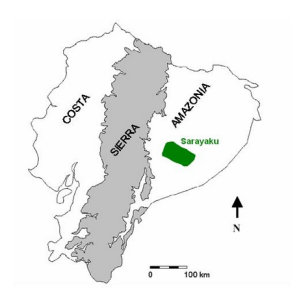
1. Factual background
Texaco-Gulf operated in Ecuador for almost thirty years, between 1964 and 1992, in the Ecuadorian Amazon region. The Ecuadorian state’s original concession to the Texaco-Gulf consortium included 1,500,000 hectares for petroleum exploration and exploitation. However, on 4 August 1973, the state signed a new contract with the petroleum companies limiting the area of the concession to 491,355 ha.
During this period, Texaco drilled 339 wells in 15 petroleum fields and 627 toxic wastewater pits were abandoned, along with other elements of petroleum infrastructure. Moreover, obsolete and highly polluting technologies were used during these years of exploitation. The deforestation of 2,000,000 hectares of land is attributed to petroleum operations in the northern Ecuadorian Amazon, as well as massive water contamination with toxic substances and heavy metals. The wastes derived from petroleum operations and accidental crude oil spills have had a major effect on forests, rivers, and estuaries:
“It has also been estimated that the company deliberately dumped tons of toxic drilling and maintenance wastes and 19 billion gallons of produced wastes into the environment without treatment or monitoring, despite oil industry standards that suggest reinjecting the wastes back into the ground. In addition to routine deliberate discharges, accidental spills were common. During the time that Texaco operated the main trans-Ecuadorean pipeline, spills from that line alone sent an estimated 16.8 million gallons of crude into the environment. By comparison, the Exxon Valdez spilled 10.8 million gallons into the Prince William Sound in the largest oil spill in the history of the United States.”
Click here for the factsheet (12 pages): FS_042_Texaco-Chevron Ecuador



